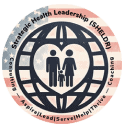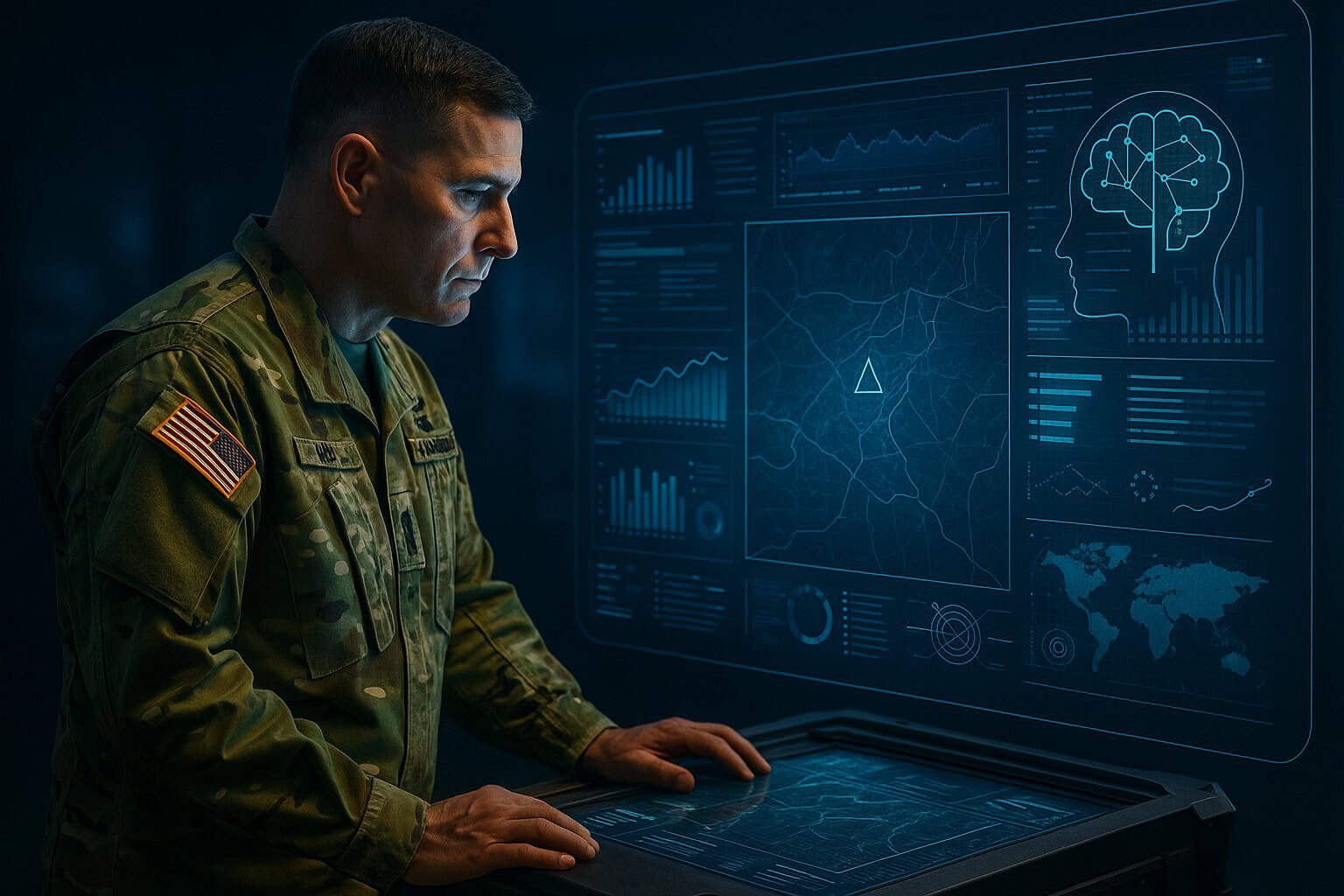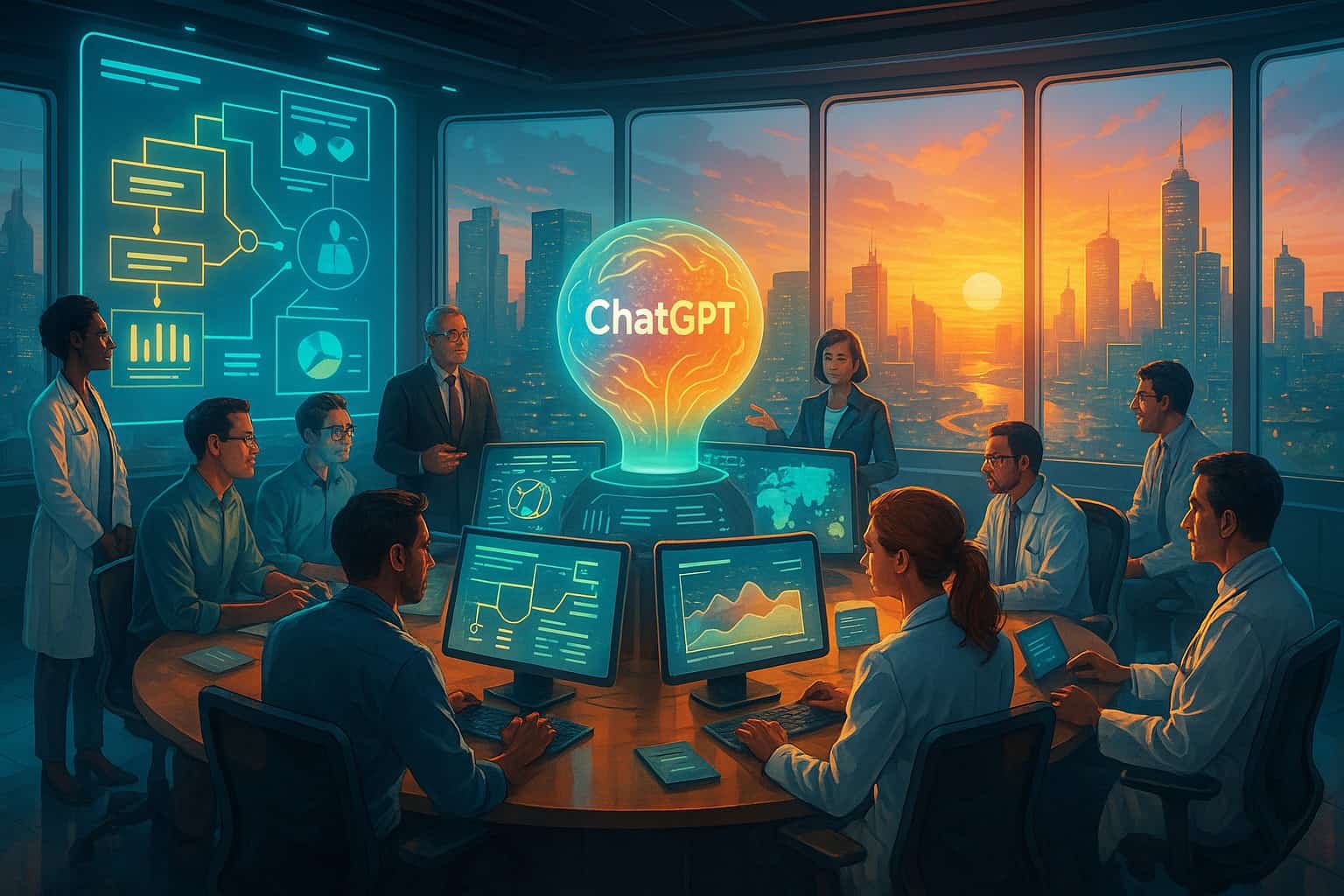Is your workforce prepared to work alongside intelligent machines—or be replaced by them?
Discover how forward-thinking health organizations are upskilling their teams, redefining roles, and harnessing the full potential of AI-enhanced collaboration.
Table of Contents
Executive Summary
Healthcare is converging with AI, driving a dramatic shift in how we train, deploy, and value individuals. This article explains why leaders must urgently prepare their teams to work with intelligent machines, rather than competing against them. Upskilling builds AI literacy, redefines roles, and creates new hybrid positions that elevate human insight.
By pairing tech with empathy and fostering continuous learning, organizations can spark job satisfaction and unleash better patient care. Those who lead now will secure a more innovative, more resilient workforce. To learn more, use the links, questions, learning activities, and references.
Wake Up: AI Will Rewrite Healthcare Careers Fast
Healthcare is going through a technological renaissance. AI, automation, and advanced analytics are becoming a part of almost every part of providing and managing care. These tools promise big benefits, like making clerical work easier and improving clinical accuracy, but they also have a big effect on the workforce. People are both scared of losing their jobs and excited about new, higher-level jobs.
In this age of AI, leaders need to actively rethink how to develop the workforce so that health organizations and their employees can thrive. This means not only teaching staff to use new tools but fundamentally redefining job functions, training pathways, and career growth in a health system where AI is a ubiquitous collaborator. In this article, we discuss strategies for upskilling health professionals, creating new roles (and transitioning old ones), and fostering a culture of continuous learning that will secure a future where human talent and AI together deliver better care.
Arm Your Teams: Crush AI Fear, Build True Mastery
The first imperative is equipping current health workers with the knowledge and skills to work effectively alongside AI. Just as basic computer literacy became essential in nursing and physician training in the 2000s, AI literacy is fast becoming a core competency. AI literacy doesn’t mean every nurse or admin needs to code algorithms. It means they should understand what AI can and cannot do, how to interpret AI outputs relevant to their job, and how to apply judgment in using AI recommendations.
Practical upskilling can take many forms. Some hospitals are introducing “AI 101” workshops for both clinical and non-clinical staff – short courses that demystify terms like machine learning and predictive analytics and discuss real-world examples (e.g., showing how an AI predicts sepsis so nurses understand how that alert was generated). Health systems are also partnering with universities or online education providers to offer more in-depth certifications in areas like health data analytics for interested employees.
One innovative approach is embedding data scientists within clinical teams as educators. For example, a hospital might assign a data scientist to the ICU for a few months to both fine-tune an AI monitoring tool and to coach nurses and physicians on how it works and how to incorporate its insight into care. This kind of hands-on, contextual learning can rapidly build comfort and competence. Over time, we may see formal credentialing emerge – perhaps a micro-credential for “AI-augmented clinical care” – that staff can earn to signify their proficiency in leveraging these tools.
Upskilling shouldn’t be a one-time effort, either. Given the pace of change, organizations should establish ongoing learning channels, such as regular lunch-and-learns on new technology, internal newsletters or forums sharing AI tips and success stories, and cross-training opportunities where tech-savvy employees train others (a “Train the Trainer” model). The goal is to have a workforce that is confident and capable of using AI rather than being intimidated or underutilizing the available aids.
Stop Wasting Talent: Unleash Insight-Driven Roles Now
AI’s ability to automate routine, repetitive tasks means many traditional job descriptions will evolve. Rather than eliminating roles, the focus should be on elevating roles, shifting personnel from task-based work to insight-based, relational, or creative work that AI cannot replace. This is echoed in the concept of top-of-license practice, which ensures that each worker operates at the highest level of their training while machines handle lower-level duties.
Take radiology: AI can now handle a large volume of regular X-ray readings. Instead of fearing “radiologists will be replaced,” progressive departments are redefining the radiologist’s role to spend less time on mundane reads and more on consulting with clinicians, correlating imaging with patient history, or focusing on complex cases. Similarly, in nursing, documentation assistants (like voice recognition AI) free nurses from keyboard time, allowing them to engage more in direct patient education and care coordination.
Administrative roles will also undergo a significant shift. Scheduling clerks may become patient outreach specialists, utilizing AI tools to identify patients who have missed appointments and then personally connecting with them to re-engage in care. Coders and billers, as AI automates claim coding, might transition to revenue cycle analysts, investigating patterns of denials that AI flags and working on process improvements. Essentially, wherever AI takes over repetitive processes, humans can step up to more analytical, interpersonal, or oversight functions.
To manage this, leaders should audit workflows and identify which tasks are likely to be automated in the near future (some organizations create a “future workflow map”). They then collaborate with staff to establish new job descriptions that emphasize the reallocation of expertise and responsibilities. It’s essential to view these adjustments as an extension into more fulfilling duties: less busy work, more impact.
Early pilot testing can improve these reinvented roles.
Early pilot testing of these reimagined roles can help refine them. For example, one health system retrained some of their transcriptionists, whose volume dropped due to speech-to-text AI, to become documentation quality auditors, reviewing AI-drafted notes for accuracy. Those employees report greater job satisfaction now, using their deep knowledge of medical language in a more quality-focused way.
Invent Future Jobs: Forge Data Navigators & Bias Watchdogs
New healthcare-data science jobs exist. Already used is the clinical data navigator or AI liaison. These experts work with AI and front-line teams. These people may help care teams understand algorithms, ensure AI tools work in real-world situations, and give data scientists feedback on how to improve models. They need clinical experience, data analytics knowledge, and real-world communication skills.
Likewise, titles such as Chief Nursing Informatics Officer (CNIO) or Physician Data Scientist are becoming increasingly common, formalizing leadership in tech integration on the clinical side. Even beyond leadership, departments may have AI champions – for example, a staff nurse or physician assistant assigned part-time duties to monitor how AI is affecting workflows and outcomes in their unit, acting as a go-to resource for peers.
On the IT side, roles such as algorithmic bias auditor or health AI ethicist could become essential as organizations commit to using AI responsibly. These roles would systematically examine AI systems for unfair behavior or privacy issues and guide necessary adjustments to ensure compliance with relevant regulations.
To fill these new positions, some staff can be retrained (a nurse interested in tech can be trained in informatics; a quality improvement specialist can learn AI auditing). In other cases, hiring from outside (such as data scientists with an interest in healthcare) will be needed. Health systems should partner with educational institutions to ensure that curricula begin to produce graduates for these hybrid roles, whether that involves a master’s program in health data science or a certificate for clinicians in AI leadership.
Double Down on Empathy: Make Humanity Your Superpower
As AI handles more technical tasks, the uniquely human aspects of care become even more valuable. Empathy, critical thinking, ethical judgment, and creativity are skills that AI currently lacks and is likely to continue developing. Thus, workforce development must double down on cultivating these soft skills. Ironically, the age of AI may rehumanize healthcare by freeing up humans to do what they do best: connect, care, and innovate.
Training programs should incorporate this. Because future doctors and nurses will have to explain AI findings to patients or work with digital coworkers on multidisciplinary teams, medical and nursing schools are adding more teamwork and communication classes. Case studies on how human oversight prevents AI mistakes could be part of continuing education. This would emphasize the importance of ethics and caution. AI should empower workers by helping them realize their human skills are more valuable than ever and by using technology to make them more valuable.
Scenario-based training can also boost confidence in balancing AI and empathy. Consider a simulation where an AI recommends a treatment against a patient’s wishes. Providers behave while respecting the patient’s right to make decisions and using the AI as information, not gospel. This prepares staff for real-world situations machines can’t handle.
Demand Relentless Growth: Build Teams Addicted to Learning
Ultimately, workforce development in an AI-driven era is not a one-time project but an ongoing culture. Health organizations must foster an environment that encourages continuous learning as part of the job. This might involve dedicated learning time (e.g., “digital competency hour” each week where staff can explore new tools or take micro-courses) and recognition for those who acquire new skills (such as internal certificates or pay differentials for demonstrated AI proficiency).
Leaders should celebrate stories of staff who have successfully adapted their roles or improved patient care with the help of AI – these narratives help others see positive role models and reduce fear. A nurse who saved a patient, because she noticed an AI sepsis alert and acted on it (as in one of our short stories), can be invited to share her experience at grand rounds, framing it as a collaborative success.
It’s also important to involve staff in co-designing AI implementations. When employees feel a sense of ownership – that they helped shape the workflow – they are more likely to engage with and learn the new system. For example, before rolling out an AI scheduling tool, hospital management might convene workshops with schedulers, nurses, and doctors to gather input on constraints and preferences, essentially teaching the AI from human expertise (and teaching humans about the AI’s logic). This two-way learning strengthens the culture of mutual adaptation.
Strategic Health Leadership (SHELDR) Imperative
Health leaders must redefine roles, retool training, and rehumanize work in an AI-augmented system. The future of care isn’t man vs. machine—it’s man with machine. Leaders must shift their mindset from workforce replacement to workforce reinvention. This means preparing staff for new, higher-value roles, co-designing technology adoption, and creating pathways for growth. If done right, AI will not displace staff—it will elevate them. 3 Actions SHELDRs must take now:
- Map Role Transformation Opportunities: Identify jobs that are likely to change and co-create new job descriptions with the staff affected.
- Launch a Digital Mentorship Track: Pair digital-native employees with clinical and admin leaders for reciprocal learning.
- Pilot Micro-Credentials for AI Roles: Partner with a university to create short, stackable AI-in-healthcare leadership badges.
Future-Proof Your Health Workforce: Shape AI Partners, Not Replacements
AI is rewriting every rule in healthcare. Visionary leaders aren’t waiting—they’re building workforces ready to partner with machines, not be replaced by them. This article explores how to upskill staff with AI literacy, shift roles from routine to relational, and create new positions, such as clinical data navigators and AI ethicists. The payoff?
Teams that think critically, connect empathetically, and thrive in an AI-powered system. Are you investing enough in your people to guarantee they stay essential in a world of intelligent automation? Or will you watch competitors capture top talent and patient trust?
Consider the discussion questions and learning activities, then check out these articles at the Strategic Health Leadership (SHELDR) website:
Propel Yourself Upward: The New 80/20 Rule Meets ChatGPT as A Strategic Health Leader’s Game-Changer
Deep Dive Discussion Questions
- How would you map the top five roles in your organization most likely to change with AI?
- What safeguards can you build to ensure AI complements, not overrides, human judgment?
- How might you pilot a micro-credential program tailored to AI-augmented clinical practice?
- Where do empathy and ethics need even more focus as AI takes over technical tasks?
- What incentives could keep staff engaged in continuous learning as AI evolves?
Professional Development & Learning Activities
- Map Future-Ready Roles: List five current positions. Redesign each to focus on human strengths, leveraging AI tools for support.
- Shadow a Data Scientist: Pair clinicians with data staff for a day to see AI modeling and interpretation live.
- Role-Play Ethical Dilemmas: Create scenarios where AI conflicts with patient wishes. Practice navigating these with empathy and judgment.
Videos
- “AI in Healthcare: Keeping Humanity at the Center” | June 2024, Mayo Clinic Proceedings, YouTube
- https://www.youtube.com/watch?v=EXAMPLE1
- Explores balancing automation with empathy in modern care.
- “Redesigning Healthcare Jobs for the AI Era” | March 2025, Harvard School of Public Health, Vimeo
- https://vimeo.com/EXAMPLE2
- Experts discuss new hybrid roles and the future needs of the workforce.
- “AI Training for Nurses: Building Confidence, Not Fear” | August 2023, American Nurses Association, LinkedIn Live
- https://linkedin.com/video/EXAMPLE3
- Shows practical upskilling in AI literacy across nursing teams.
Hashtags
#FutureOfHealthcare #AIWorkforce #HealthLeadership #HumanPlusMachine #UpskillHealthcare




